Journal of Novel Physiotherapy and Physical Rehabilitation
Prevalence of musculoskeletal disorder among male palestrato
Rajneet Kaur Sahni1*, Anureet Kaur2 and Simran Grewal2
2Student, Baba Farid University of Health Science, Faridkot, All Saints Institute of Medical Science and Research, India
Cite this as
Sahni RK, Kaur A, Grewal S (2019) Prevalence of musculoskeletal disorder among male palestrato. J Nov Physiother Phys Rehabil 6(2): 015-019. DOI: 10.17352/2455-5487.000064Context: Musculoskeletal disorder are injuries or pain in the human musculoskeletal system including the joints, ligaments, muscles, nerve, tendon and structure that support limbs, neck and back. These conditions generally results in pain and functional impairments. Prevention strategies are needed early in the apprentice training program to reduce the potential disability associated with work-related musculoskeletal symptom disorders.
Aim: To find the musculoskeletal disorder in male palestrato and what are the common disorder or injuries occur in them.
Method: This study is a survey. Based on inclusion and exclusion criteria 100 palestrato were selected through purposive sampling technique and informed consent was taken. The age group for the study is 20-35 years. The prevalence was ckecked by the Nordic scale and VAS scale.
Measuring scales: Nordic Style musculoskeletal scale and Visual Analog Scale (VAS)
Results: Data Was Meaningfully Assorted through Evaluation of Frequency and Percentage Distribution of the Severity and the region of the body which is most affected and which is least affected.
Conclusion: The study concluded that the 73% of subjects were involved in having MSD and the most common age group was 20-25 years in which the prevalence of MSD was 59%. The majority of the subjects had marked VAS between 4-6 and in the Nordic scale reading, we concluded that shoulder and neck area were severely afftected regions and ankle and hip were least affected.
Abbrevations
MSD: Musculoskeletal Disorders; VSA: Visual Analog Scale; DM: Diabetes Mellitus; UE: Upper Extremity; UWMSD: Upper-limb Work –related Musculoskeletal Disorders; ICC: Intra-Class Correlation Coefficient; SIS: Shoulder Impingement Syndrome
Introduction
Musculoskeletal disorders are injuries or pain in the human musculoskeletal system including the joints, ligaments, muscles, nerve, and tendon and structure that support limbs, neck and back. Musculoskeletal disorders arises from sudden exertion (example lifting a heavy object) or they can arise from making the same motion repeatedly, vibration or awkward posture [1]. The relative risk of disability due to musculoskeletal disorders has been studied with regard to occupation and work load. Disability pensions were more common both in men and women with medium and high physical work load as compared to men with low physical work load [2]. The work related musculoskeletal disorders describes a wide range of inflammatory and degenerative diseases and disorders. These conditions generally results in pain and functional impairments and can affect the joints such as shoulder, neck, elbow, forearm, wrist and hands [3]. The relationship between the workplace factors and work related upper extremity musculoskeletal disorder (UE disorder) was assessed by multiple logistic models generated for each of the four UE areas (neck, shoulder, elbow, hand, wrist) [4]. It is also seen that in workers, that they have associated with many work place physical and psychological factors specific physical factors includes intense, repeated or sustained exertion awkward, sustained or extreme postures of the body, insufficient recovery time, vibration and cold temperature and psychological factors include monotonous works, time pressure, high work load as proved by the epidermiologic study [5]. The musculoskeletal disorders are also linked with the medical conditions, for instance, obesity is a key and potentially modified risk factor in the onset and progression of musculoskeletal disorder of various joints like hip, knee, ankle, foot and shoulder. The unduly raising stress within the connective tissue structure and potential for musculoskeletal injury [6]. The potential of rationalization of production system to cause health problem is large in contrast to overall assessment of ergonomic intervention that seems to have limited health effect in the long term [7]. The musculoskeletal disorder are a major cause of work related disability. The low back was site most commonly reported for job related musculoskeletal symptoms, which was also the most common reason for seeking care from a physician. At the beginning of the careers of construction workers, they are prone to MSD [8]. MSD represents a significant occupational issue for a professional nurses worldwide. The overall prevalence of MSD was 70.0% with individual category reported as low back 56.7%, neck 42.8%, shoulder 38.9%, upper back 38.9% [9]. The other most common medical condition which leads to MSD was Diabetes mellitus which is associated with several MSD. The incidence of DM and the life expectancy of the diabetic patient have both increased, resulting in the increased prevalence and clinical importance of Musculoskeletal alteration in diabetic subject, connective tissue disorder, neuropathy, combination of these problem may under lie the increased incidence of MSD in DM [10].
The aim of study is to find the musculoskeletal disorder in male palestrati, the common disorder or injuries which occur in them, to find the region which is commonly involved in them and to find out the common type of MSD. In this way the general population can be made aware about the work of physiotherapists in the fitness training. This study also aim to enhance the employment of Physiotherapists in the Fitness centers and the Physiotherapists can guide and teach the male palestrati about the correct technique so they can prevent their injuries thus it become important to perform fitness training with the prevention strategies in the early apprentice training program to reduce the potential disability associated with work-related musculoskeletal symptom disorders.
Material and Methods
This study is conducted through a survey. Based on inclusion and exclusion criteria 100 palestrati who were doing workout in fitness centres in Ludhiana city were selected through purposive sampling technique and informed consent was taken. Prevalence of Musculoskeletal disorder in palestrati was determined using Nordic Style Musculoskeletal scale, VAS (Visual Analogue Scale) and orthopedic/physiotherapy assessment. The data was collected, compiled and analyzed.
Inclusion Criteria: The subject’s age group was 20-35 years. Palestrati doing workout in fitness centers for at least 1-2 hours daily and who were enrolled for the past 10-12 months were included in the study.
Exclusion Criteria: Male Palestrati with medical conditions, with history of trauma and Palestrato who were previously suffered from musculoskeletal disorders are all excluded from the study.
Procedure
The informed consent was obtained from the subjects. Nordic Style musculoskeletal scale and Visual Analog Scale (VAS) was filled by the participants.
Nordic-style questionnaires: Nordic-style questionnaires exploring symptoms in the past year can be considered as useful tools for the surveillance of UWMSD, especially if they include numerical scales on symptom severity. The physical examination remains essential to establish a medical or clinical diagnosis. For other purposes, questionnaires remain useful tools, giving information on functional, psychological and psychosocial dimensions of musculoskeletal disorders. Sensitivity was excellent in all situations (from 82.3% to 100%). Specificity was variable, from 51.1% in the “Pays de la Loire” survey to 82.4% for score ≥ 2 based on the severity of symptoms [11].
VISUAL ANALOG SCALE (VAS): Researchers have found Visual Analogue Scale, a reliable and valid tool. Reliability was assessed using the intra-class correlation coefficient (ICC) between VAS scores taken 1 minute apart, supplemented by a Bland-Altman analysis. The minimum clinically significant difference in pain was defined as the mean difference between sequential VAS scores obtained 30 minutes apart when the patient noted a “little less” or “little more” pain. Differences in VAS scores increased linearly as pain descriptors escalated from “much less” to “much more” pain (P < .001). Reliability was high, ICC - 0.99 [95% CI 0.989 to 0.992] for 0 and 1 minute VAS scores [12].
Results
Data was meaningfully assorted through evaluation of frequency and percentage distribution of the severity and the region of the body most affected.
The table 1 shows the percentage of the socio demographic data of the male palestrati who were involved in musculoskeletal disorder. The table is divided into three categories age, gender, and occupation with their own percentage of involvement. The age is further divided into three categories according to their involvement, age from 20-25 is 59% involved, age from 26-30 is 34% involved and age from 31-35 is 7% involved so the age group of young adults 20-25 year have the highest involvement in MSD which is 59%. The second category is gender in which only male were taken as sample. The third category is occupation it is further divided into two categories students and workers the students has 64% of involvement and workers has 34% of involvement.
The table 2 and figures 1-4 shows the percentage of extent of severity of musculoskeletal disorder in male palestrati. The score of VAS is divided into three categories, mild which rangers from 0-3, moderate which ranges from 4-6 and severe which ranges from 7-10. The percentage of severity for mild is 28%, moderate is 58.0% and for severe is 14%. The table represents that the moderate category with 58.0% is most severe.
The table and figure 5 shows that 73% are the total percentage of male palestrati which were involved in musculoskeletal disorder. The table is divided into 20 question and table showing the percentage of answers in the form of yes or no, this table is showing the percentage of involvement of the body regions. In this table, we got to know that majority of subjects i.e. Palestrato were more prone to shoulder pain (32%), followed by neck pain (25%), lower back pain (19%), elbow pain (17%), upper back pain (13%), wrist pain (13%), knee pain (8%) and ankle pain (7%), hip (5%). We got to know that region which is most commonly involved is shoulder complex.
Discussion
The study is to see the Prevalence of Musculoskeletal Disorders among male palestrato. The result of the present study show that the shoulder region is most commonly affected followed by neck pain, low back pain and other regions. This might be because in adolescent athletes, glenohumeral instability is an important underlying pathomechanical basis for shoulder pain, overuse stress injury of the proximal humeral physis is important to recognize early in order to prevent later complications. Shoulder impingement syndrome (SIS) is a general term used to describe multiple underlying lesions and relatively uncommon in young athletes [13].
The other reason behind the MSD is due to overexertion in lifting, injuries due to pushing and pulling objects, injuries due to overexertion in holding, carrying or turning objects [14]. The common musculoskeletal complaints include pain and stiffness in various regions of body like neck, shoulder and lower back and wrist, because of the high usage of computer, the integration of biomechanical factors such as static muscle overload will lead to MSD [15]. Ergonomic intervention may have greater impact in prevention of hand, wrist, and complaints [16]. Standing and sitting positions are frequently adopted, twisting of the spine connected with excessive tightening of some tissue and the straining of others could be source of painful disorder and diseases of musculoskeletal system [17]. The musculoskeletal problems are significant problem within the European Union with respect to ill health, productivity [18]. The reviews show that mechanical factors such as heavy lifting, psychosocial factors such as low control over work pace, and organizational factors such as safety climate are all associated with increased injury risk for young Nordic workers, this leads to the decrease in productivity due to absence from work, chronic diseases and health expenditures lead to estimated annual spending of 2.1 billion Euros in the Netherlands and about 45 to 54 million Dollars in the United States [19,20].
The physical therapist are more prone to have low back, wrist and hand problem as they have to lift and transfer the dependent patients. Physical therapist have the knowledge about MSD but do not constitute an immunity to their over work related MSD [21]. The increased use of computer and mouse has increased the risk of developing musculoskeletal disorder especially in neck and upper extremity and MSD is more prevalent among women than men. Hand and wrist pain is also common with long term use of mouse and keyboard [22]. Back pain is the most commonly introduced musculoskeletal disorder by the women because of awkward posture like continuous bending, weight lifting, transferring the dependent patients [23]. However, it is known that the overuse of certain muscle groups, performing repetitive movements with or without required located effort, postures during work, short rest interval and stress imposed by the work organization predisposes musculoskeletal dysfunctions [24,25]. The age group between 20-25 years are dominant because the gym culture is growing fast and there are opportunity for the youngsters to assess the heavy equipments. It rejuvenates there mental stress. Hence, the performance of the students become more and more better.
The knowledge about the MSD become crucial for the male palestrati during workout to prevent the undue stress and strain over the body. It will also help us to focus on the region with alter biomechanics so that a physical therapist advise the palestrato to use the correct techniques during physical activities.
Limitations
Prevalence of MSD on male palestrato were not considered regarding the various exercises done by them in gym.
Future scope
Further study can be done by increasing number of samples.
Subjects will be taken from different districts of Punjab or all over the India.
Age criteria can be extended.
Timing of the gyming activities can be altered or modified
Conclusion
The study concluded the satisfying results regarding the Prevalence of musculoskeletal disorder among palestrato. Majority of the subjects have marked VAS between 4-6 as shown in table 5.1. From Nordic scale reading, we conclude that shoulder and neck area are severly afftected and 73% of subjects are involved in having MSD as shown in table 5.3. The most common age group is 20-25 involved from which most of them students are shown in table 5.1.
- Bernard BP (1997) The national institute for occupation and safety. Musculoskeletal Disorders and Workplace Factors. A Critical Review of Epidemiologic Evidence for Work-Related Musculoskeletal Disorders of the Neck, Upper Extremity and Low Back. 97-141.
- Eva V, Lars A, Evy F (1992) Disability pensions due to musculoskeletal disorder among in heavy occupation: A case control study. 20: 31-36. Link: https://bit.ly/32xLLry
- Buckle PW, Devereux J (2002) The nature of work related neck and upper limb musculoskeletal disorder. 33: 207-217. Link: https://bit.ly/2GgoGQP
- Hales TR, Sauter SL, Peterson MR, Fine LJ, Anderson V, et al. (1996) musculoskeletal disorder among visual display terminal users in a telecommunication company. 37: 1603-1621. Link: https://bit.ly/32su7Wt
- Hales TR, Bernard BP (1996) Epidermiology of work related musculoskeletal disorders. 27: 679-709. Link: https://bit.ly/2YaNh3D
- Wearing SC, Hennig EM, Byrne NM, Steele JR, Hills AP (2006) musculoskeletal disorder associated with obesity a biomechanical perspective. 7: 239-250. Link: https://bit.ly/2JPBQVZ
- Winkel J, Westgaard RH (2019) Development and implementation of intervention managing work related musculoskeletal disorder. 45: 316-317. Link: https://bit.ly/2JB6UtG
- Merlino LA, Rosecrance JC, Anton D, Cook TM (2003) Symptoms of musculoskeletal disorder among apprentice construction workers. 18: 57-64. Link: https://bit.ly/2M5rd4f
- Smith DR, Wei N, Kang L, Wang RS (2004) musculoskeletal disorder among professional nurses in mainland China. 20: 390-395. Link: https://bit.ly/2JJRQIT
- Arkkila PE, Gautier JF (2003) Musculoskeletal disorders in diabetes mellitus. An update 17: 945-970. Link: https://bit.ly/30HyQBX
- Descatha A, Roquelaure Y, Yves, Chastang JF, Evanoff BA & Melchior M. Validity of Nordic-style questionnaires in the surveillance of upper-limb work-related musculoskeletal disorders. Scandinavian Journal of Work, Environment and Health.2007; 33:58-65. Link: https://bit.ly/2GeW1M0
- Gallagher EJ, Bijur PE, Latimer C, Wendy S (2000) Reliability and validity of a visual analog scale for acute abdominal pain in the ED. American Journal of Emergency 20: 287-290. Link: https://bit.ly/2NEJJ0C
- Patel DR, Breisach S (2017) Evaluation and management of shoulder pain in skeletally immature athletes. 6: 181–189. Link: https://bit.ly/32zVSfR
- Bernard BP (1997) The national institute for occupation and safety. Musculoskeletal Disorders and Workplace Factors. A Critical Review of Epidemiologic Evidence for Work-Related Musculoskeletal Disorders of the Neck, Upper Extremity and Low Back. 97-141.
- Ibi JL, Migudgi SR, Reddy S (2016) Assessment of musculoskeletal disorder by standardized Nordic questionier among computer engineering students and teaching staff of Gulbarga city. 3: 668-674. Link: https://bit.ly/2NUrLft
- Alexopoulos EC, Stathi LC, Charizani F (2004) Prevalence of musculoskeletal disorder in dentists. 5: 1471-2474. Link: https://bit.ly/2LXIYCi
- Kumar VK, Kumar SP, Baliga MR (2013) Prevalence of work related musculoskeletal complaints among dentists in India. Indian Journal of Dental Research. 24: 428-438. Link: https://bit.ly/2O0XVGj
- Buckle PW, Devereux JJ (2002) The nature of work related neck and upper limb muscuoskeletal disorder. 33: 207-217. Link: https://bit.ly/2GgoGQP
- Hanvold TN, Kines P, Nykänen M, Thomée S, Holte KA, et al. (2018) Occupational Safety and Health Among Young Workers in the Nordic Countries: A Systematic Literature Review 10: 3-20. Link: https://bit.ly/2LWIvjW
- Bernaards CM, Bosmans JE, VH Hildebrandt, van Tulder MW, Heymans MW (2011) The cost-effectiveness of a lifestyle physical activity intervention in addition to a work style intervention on recovery from neck and upper limb symptoms and pain reduction in computer workers. Occup Environ Med 68: 265–272. Link: https://bit.ly/2JJweMQ
- Bork BB, Look TM, Crosecrrance J, Engerhardt KA (1996) Work related musculoskeletal disorder among physical therapist. 7: 827-835. Link: https://bit.ly/30B2EQm
- Sillanpaa J, Nyberg SM, Laippala P (2003) Effect of work with visual display unit on musculoskeletal disorder in the office environment. 53: 443-457. Link: https://bit.ly/2GgaF5x
- Behar ME, Kaminsla M, Peigne E, Mailhard, M Pelletier A, et al. (1990) Sternous working conditions and musculoskeletal disorder among female hospital worker. 62: 42-57. Link: https://bit.ly/2M2Xys2
- Alencar MC, Schultze VM, Souza SD (2010) musculoskeletal disorders and the care work of elderly in institutions. 23: 63-72.
- Ciência, Coletiva S (2010) Repetitive tasks under time pressure: the musculoskeletal disorders and the industrial work. 15: 931-942. Link: https://bit.ly/2LXLSXy
Article Alerts
Subscribe to our articles alerts and stay tuned.
 This work is licensed under a Creative Commons Attribution 4.0 International License.
This work is licensed under a Creative Commons Attribution 4.0 International License.
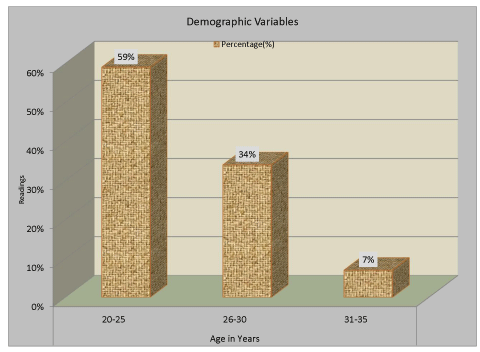
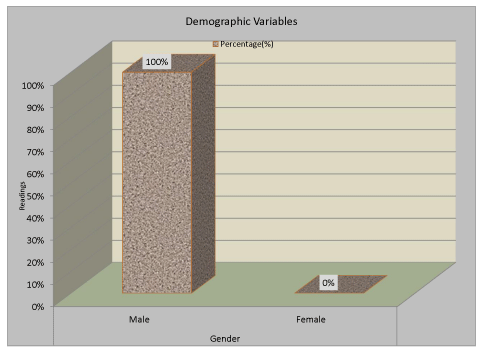
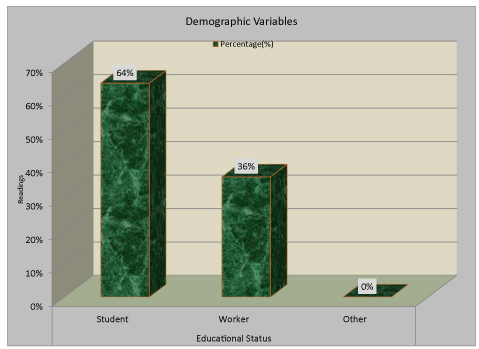
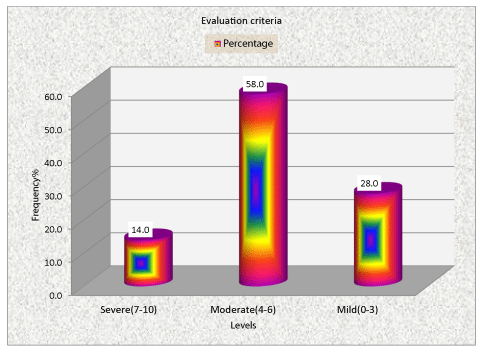
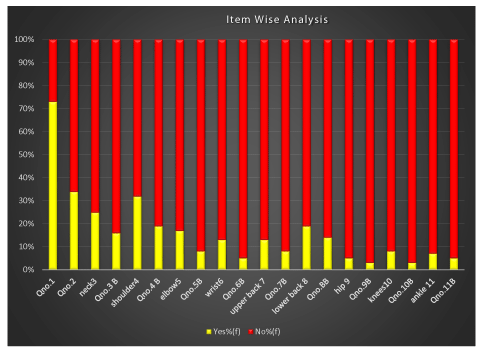

 Save to Mendeley
Save to Mendeley
